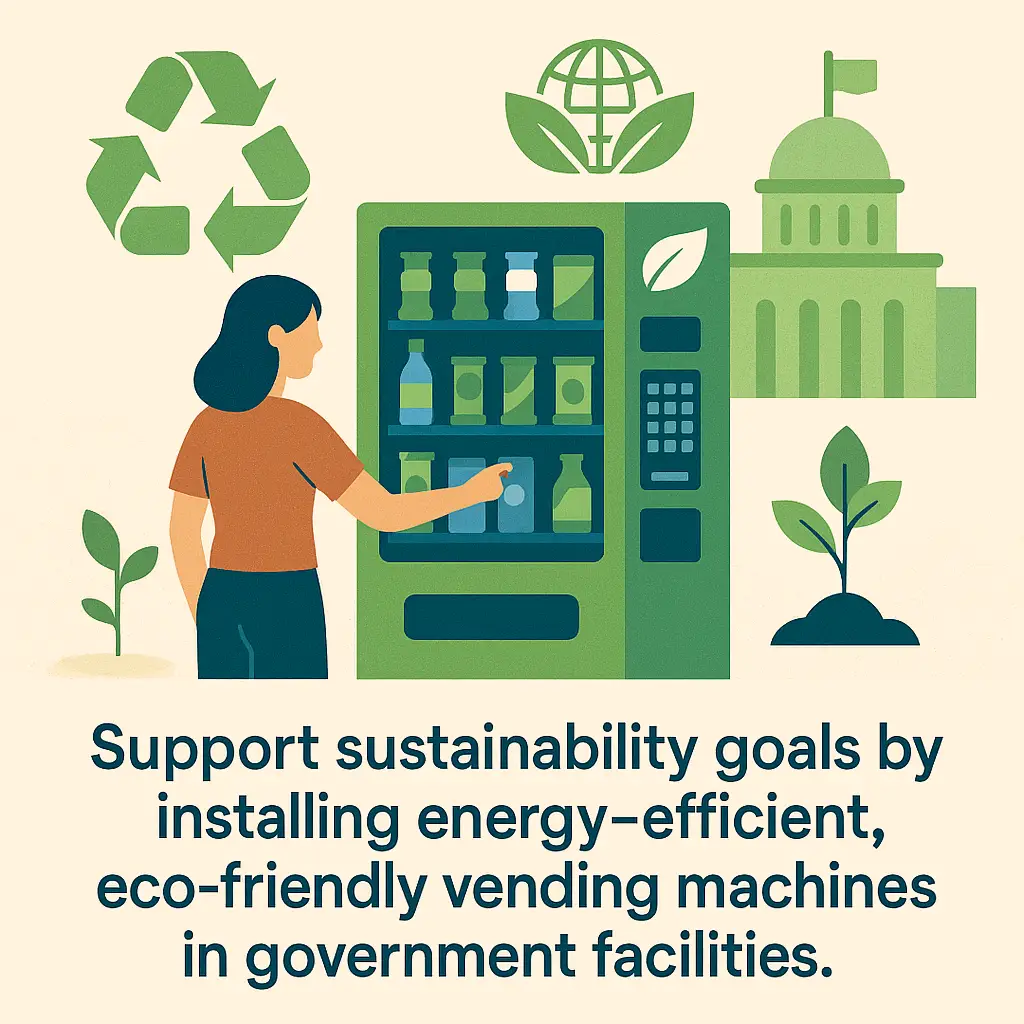Green Vending in the Public Sector
Support sustainability goals by installing energy-efficient, eco-friendly vending machines in government facilities.
Back to Vending for Public Buildings ResourcesSupport sustainability goals by installing energy-efficient, eco-friendly vending machines in government facilities.
Back to Vending for Public Buildings ResourcesEnergy-efficient vending machines lower power consumption and waste, helping public facilities meet environmental standards while reducing long-term operational costs.
![]() Energy-efficient machines help reduce utility costs over time
Energy-efficient machines help reduce utility costs over time
![]() Eco-friendly vending supports government sustainability initiatives
Eco-friendly vending supports government sustainability initiatives
![]() Modern technologies minimize waste and optimize energy use
Modern technologies minimize waste and optimize energy use

Public sector facilities increasingly aim to reduce environmental impact while maintaining operational efficiency. One often-overlooked strategy involves implementing eco-friendly vending solutions. These systems use advanced technologies to conserve energy, reduce waste, and support broader sustainability initiatives without compromising service quality.
Modern vending machines equipped with ENERGY STAR® ratings and smart sensors automatically adjust cooling cycles based on usage patterns. This leads to significant energy savings over time, lowering operational costs and supporting government sustainability goals. In addition, energy-efficient lighting, improved insulation, and sleep modes minimize unnecessary power consumption throughout the day.
Facilities interested in innovative approaches may also consider advanced systems like accessible vending setups, which often incorporate touchless technology and efficient power usage.
Many public sector organizations have set measurable sustainability targets. Installing green vending equipment aligns with these objectives, making it easier to comply with regulations and demonstrate progress. These machines not only use less energy but can also support programs that encourage healthier choices and reduced packaging waste. For example, using recyclable or compostable packaging can reinforce environmental commitments.
Integrating green vending with other facility initiatives—such as recycling programs or security and monitoring enhancements—can maximize overall impact and streamline operations.
Some decision-makers worry about upfront costs for sustainable vending equipment. However, modern energy-efficient machines are designed for long-term ROI. Reduced electricity usage lowers utility bills, while reliable technologies minimize maintenance issues. This combination makes green vending a practical investment for budget-conscious facilities. Public institutions that embrace these upgrades often see measurable reductions in operating costs over time.
For a deeper understanding of long-term planning, review related considerations in revenue programs for public buildings, which can complement sustainability initiatives.
If you're exploring vending options for your business, Vending Exchange can help simplify the process. Delivery, Installation and Equipment is provided at no cost to you - vendors provide the machines, keep them stocked, and handle all servicing. Whether you need a provider or full-service management, just fill out the form on this page to get started.
They use advanced sensors, efficient compressors, and sleep modes to minimize power consumption during low-use periods.
While initial costs may be higher, lower energy bills and reduced maintenance usually offset expenses over time.
Yes. Eco-friendly machines align with public sector sustainability goals, helping facilities meet environmental standards.
Some regions offer rebates or energy-efficiency programs that may apply to upgraded vending equipment.
Common features include LED lighting, smart cooling sensors, recyclable packaging, and touchless payment systems.
Using recyclable materials, compostable packaging, and energy-efficient designs reduces overall facility waste.
Most modern models are designed to fit standard spaces, making upgrades straightforward for public buildings.
Smart sensors adjust cooling and lighting dynamically, maintaining performance while conserving power.
Yes. Reduced energy use directly translates into lower electricity costs for building operations.
No. They can stock the same variety of items while using less energy and packaging waste.